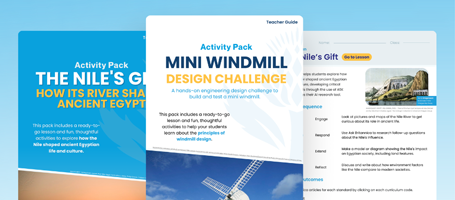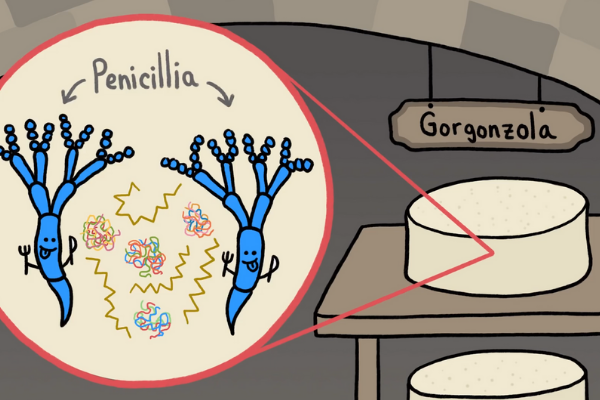Food for thought: What happens between the time food leaves the farm and the time it turns up in our lunchboxes? How does ‘controlled spoilage’ affect the development of foods and beverages? What’s the science behind the frozen foods we see in supermarkets?
Find the answers to these baffling food production questions and more, using the following resources and activities.
An Introduction to Food Production
Agriculture is another word for farming. It includes both growing and harvesting crops and raising animals, or livestock. Agriculture provides the food and many raw materials that humans need to survive.
After food leaves the farm, it is usually sent to a processing plant to be processed. As most fresh foods can spoil within a few days, people have developed many ways to preserve food. The science of preserving foods is called food processing.
Resource Packs
This Britannica School (Australia) Primary level resource pack ↗ includes age-appropriate articles, images and videos that explore how plant and animal products are grown, harvested, processed and distributed. For more advanced learners, a Middle school version↗ of this resource pack is also available.
Teacher Tip:
Schools subscribed to the New Zealand or Asia version of Britannica School can also access these resource packs at:
Britannica School (New Zealand) Primary level resource pack↗
Britannica School (New Zealand) Middle level resource pack↗
Britannica School (Asia) Elementary level resource pack↗
Britannica School (Asia) Middle level resource pack↗
Britannica School (Asia version in China) Elementary level resource pack ↗
Britannica School (Asia version in China) Middle level resource pack ↗
Activities
The following activities can be completed using resources found in the Britannica School ‘Food Production’ resource packs
- Examine the images depicting different types of food. Discuss:
- Which foods can be eaten fresh?
- Which foods require some type of food processing?
- Order the foods from least processed to most processed and discuss the different orders.
- Is there a relationship between the processing of food and how healthy it is? Explain.
- Is there a relationship between food processing and food safety and hygiene? Explain.
- Read the ‘Food Processing’ article. Select one method of food processing and create a mind map highlighting the key ideas and information about this method.
- Watch some of the videos on food processing. They depict where food comes from and how it ends up on your plate. Create a flow chart illustrating this process.
- What is controlled spoilage? Watch the Britannica video ‘Controlled Spoilage’ and explain this process using the Main Idea and Details grid.
Featured Image is a screenshot taken from “controlled spoilage” (video), Britannica School, Encyclopædia Britannica, 19 Feb. 2021.
These activities and resources have been created using content from Britannica School, the go-to site for safe, comprehensive student research. Contact your librarian to find out if your institution already has access. Find out more about Britannica School or set up your own free trial.
More Educator Resources
Sign up with your email for more free resources from Britannica.


